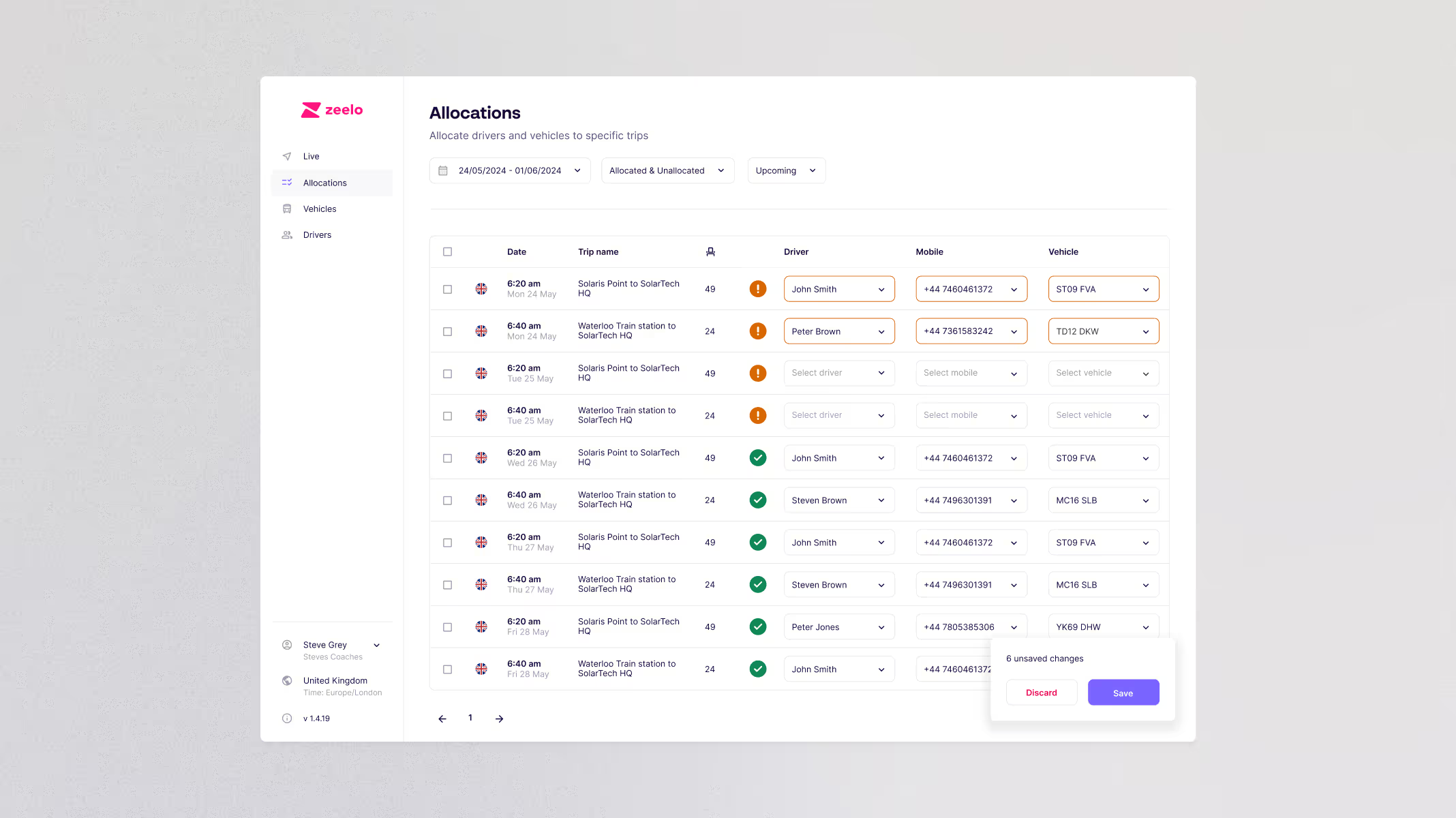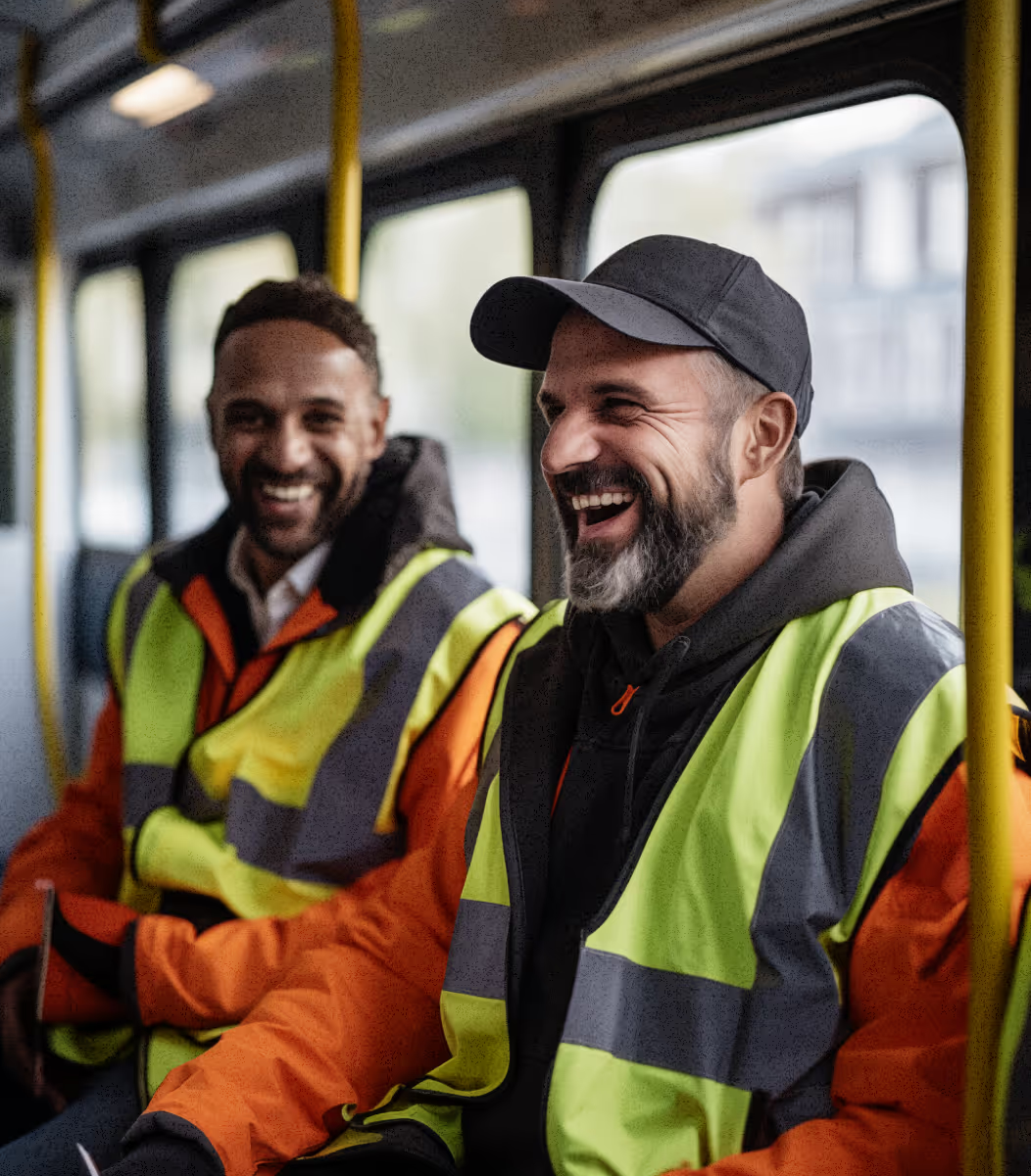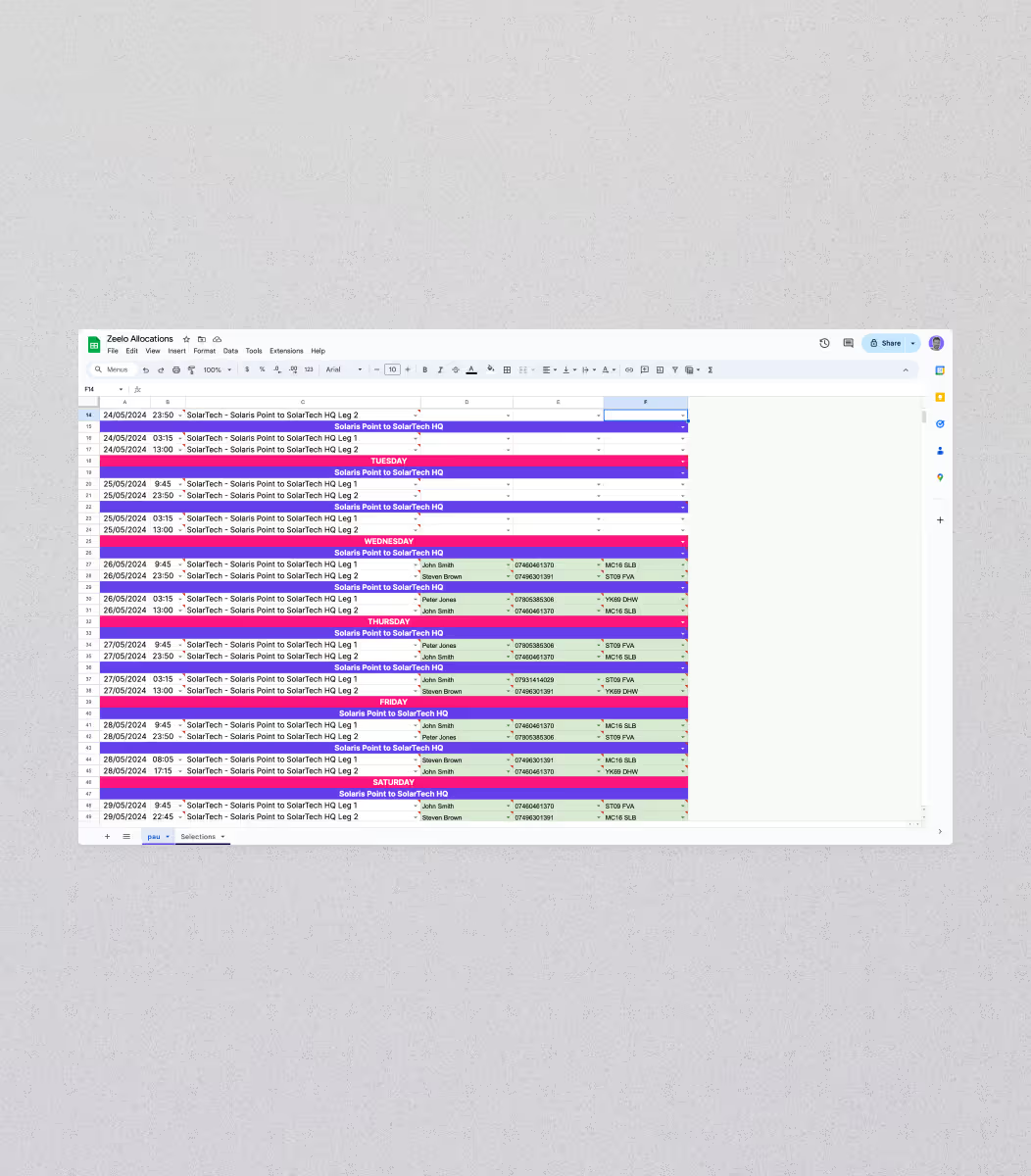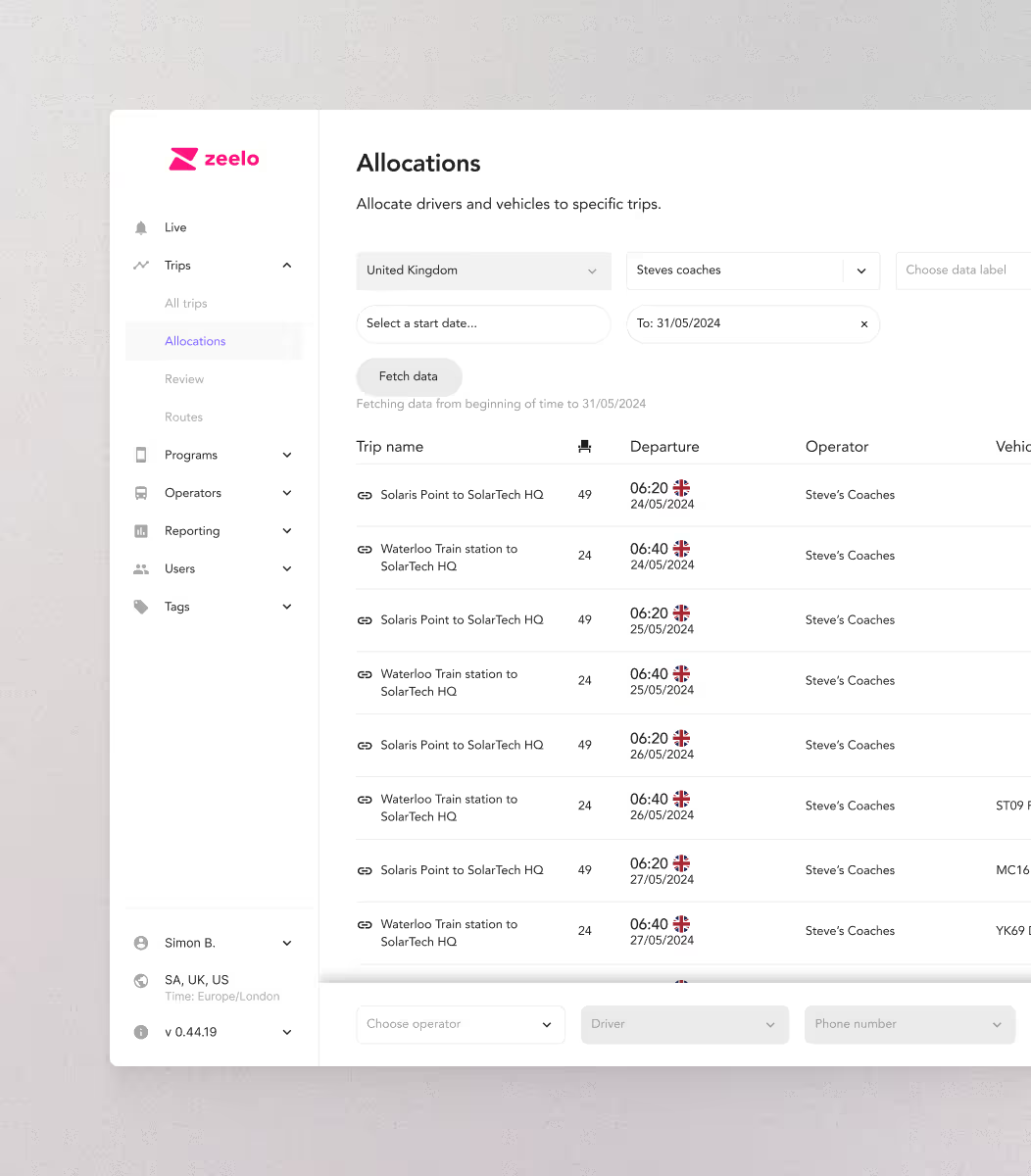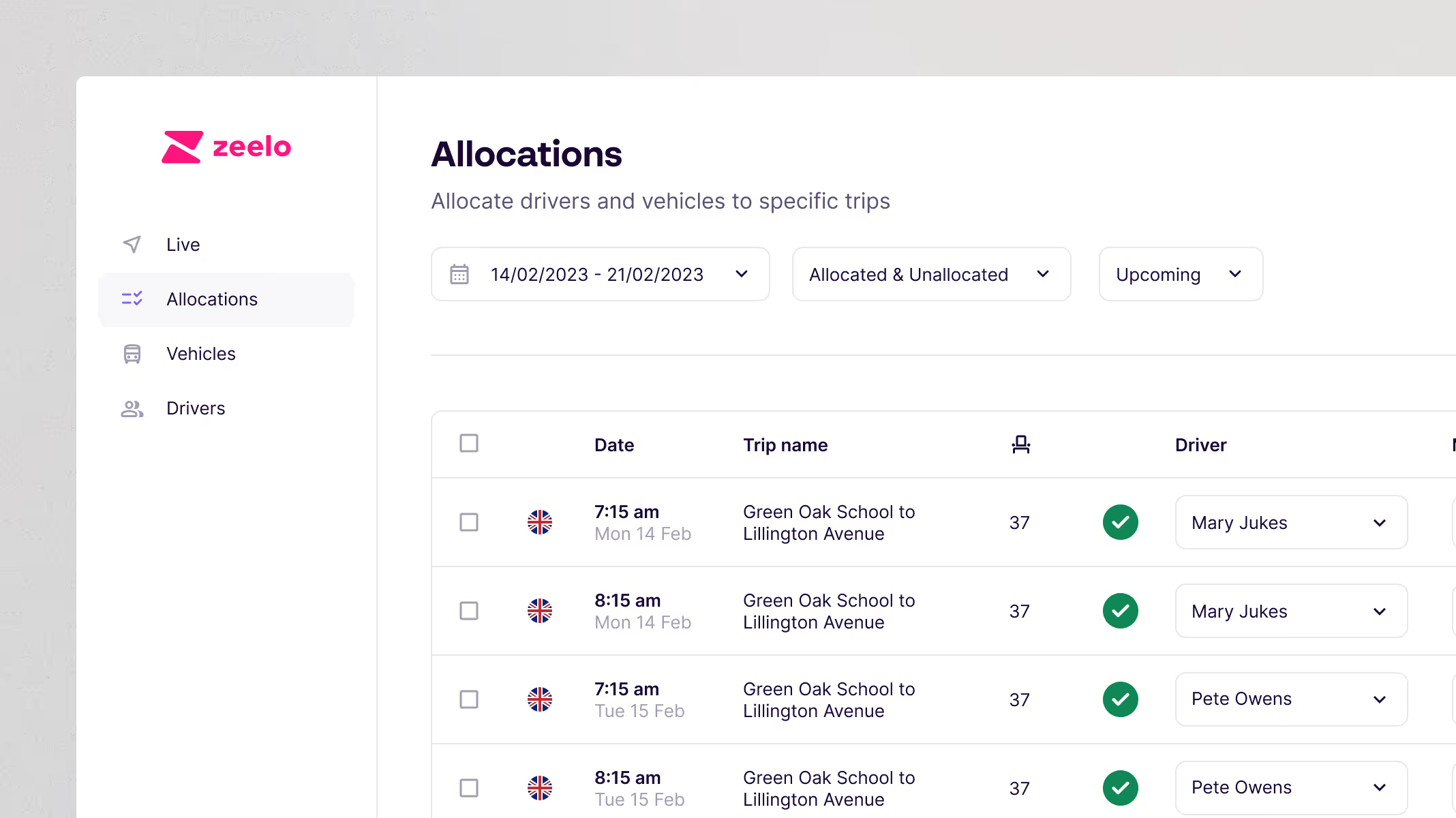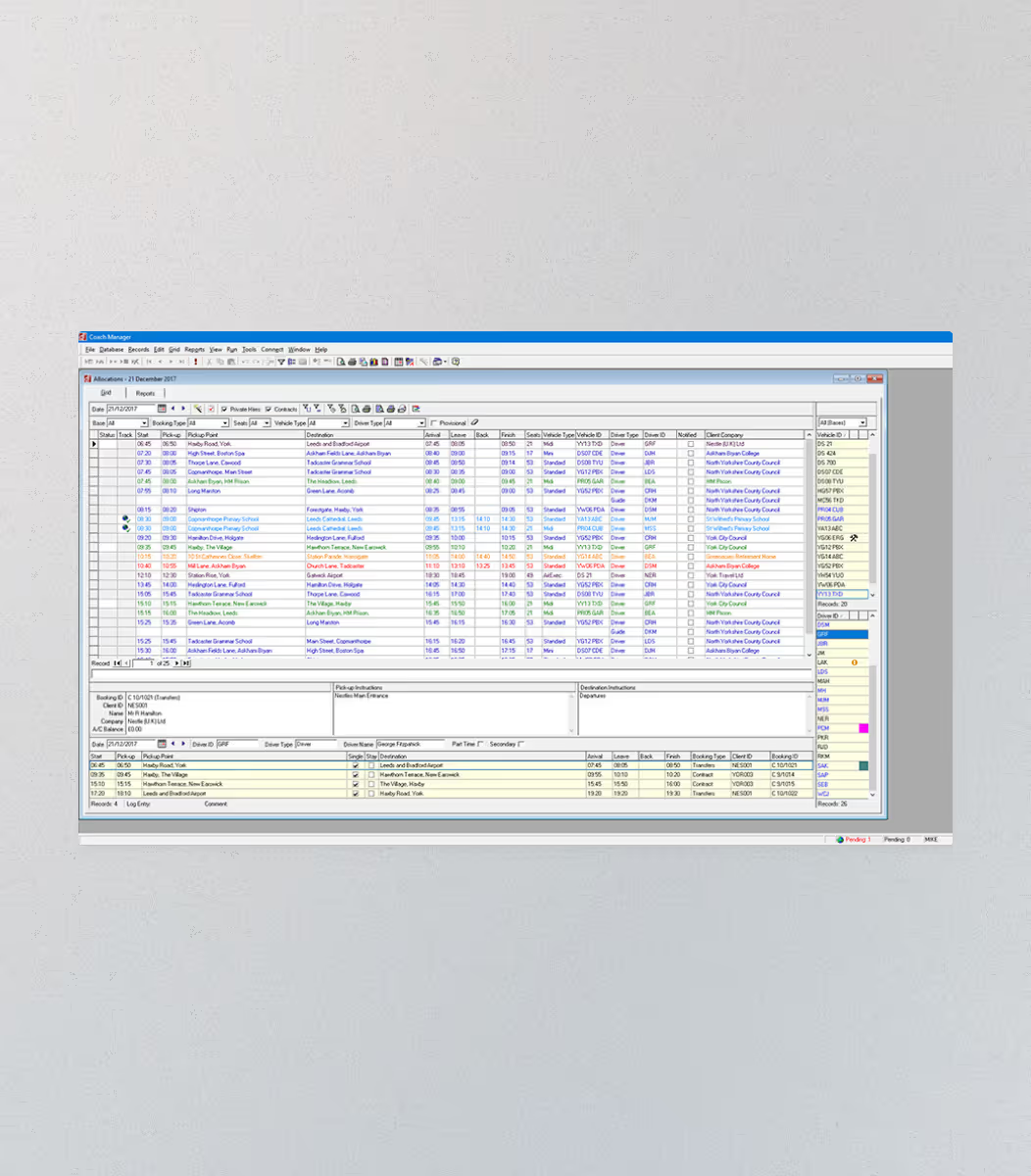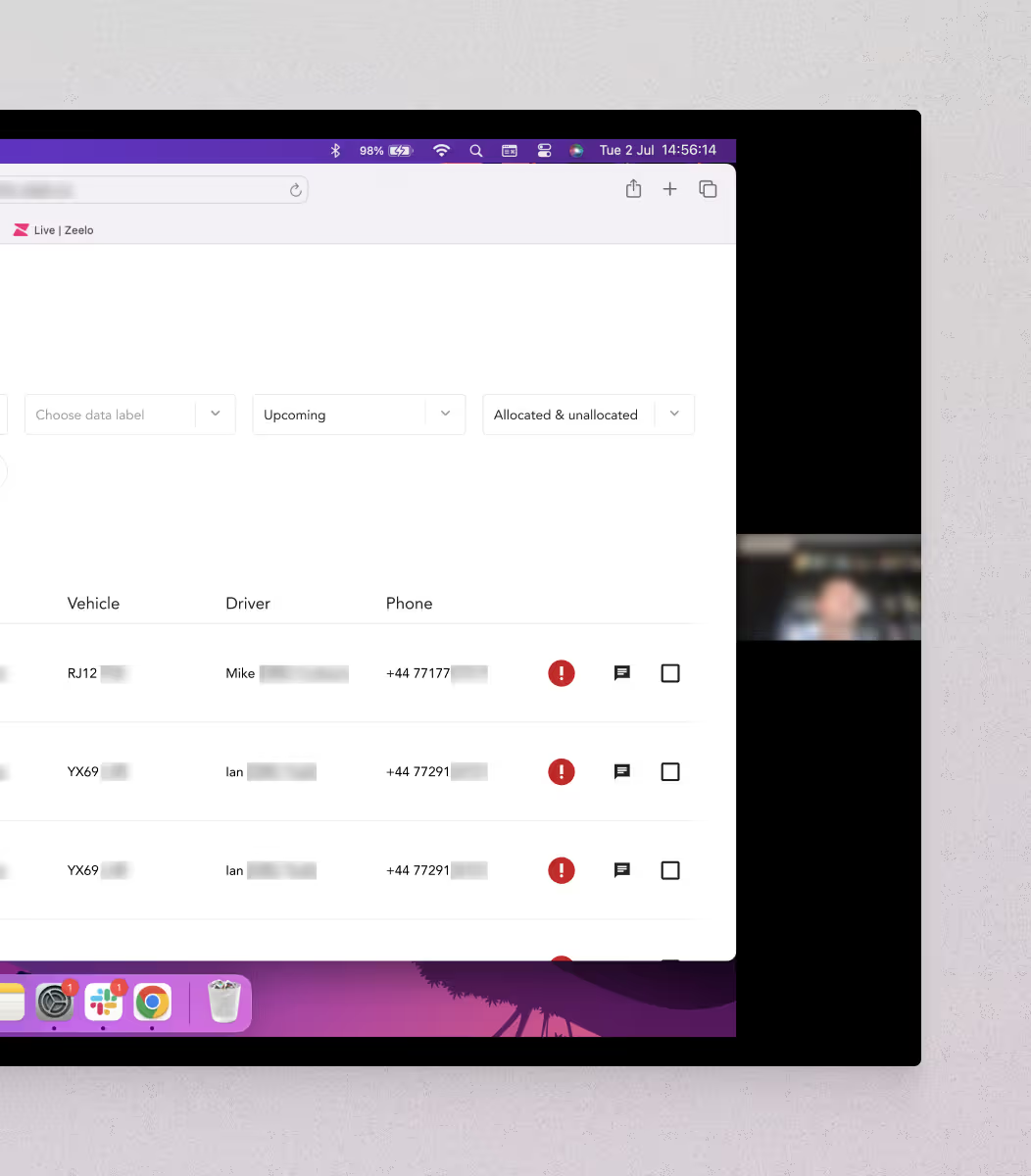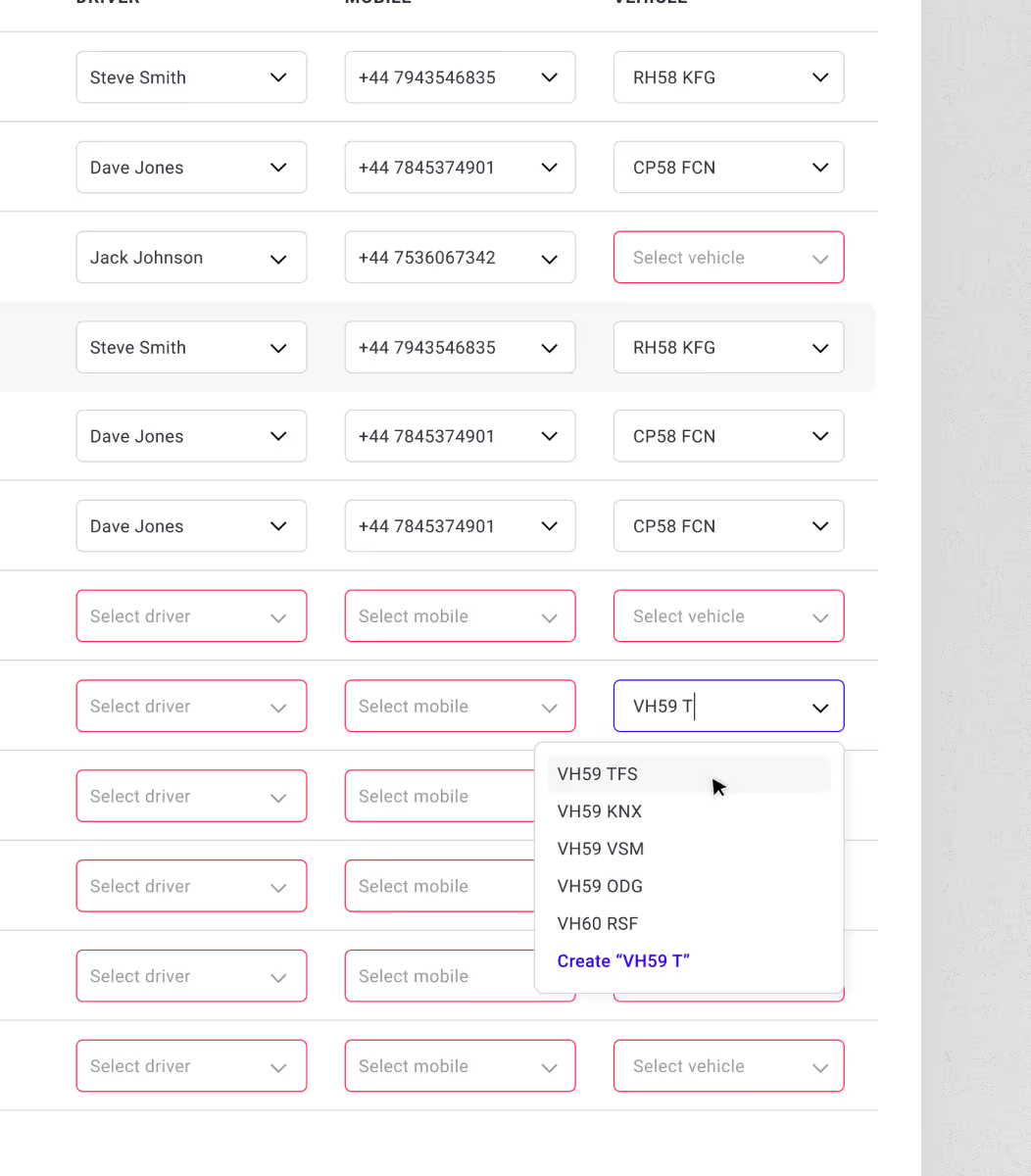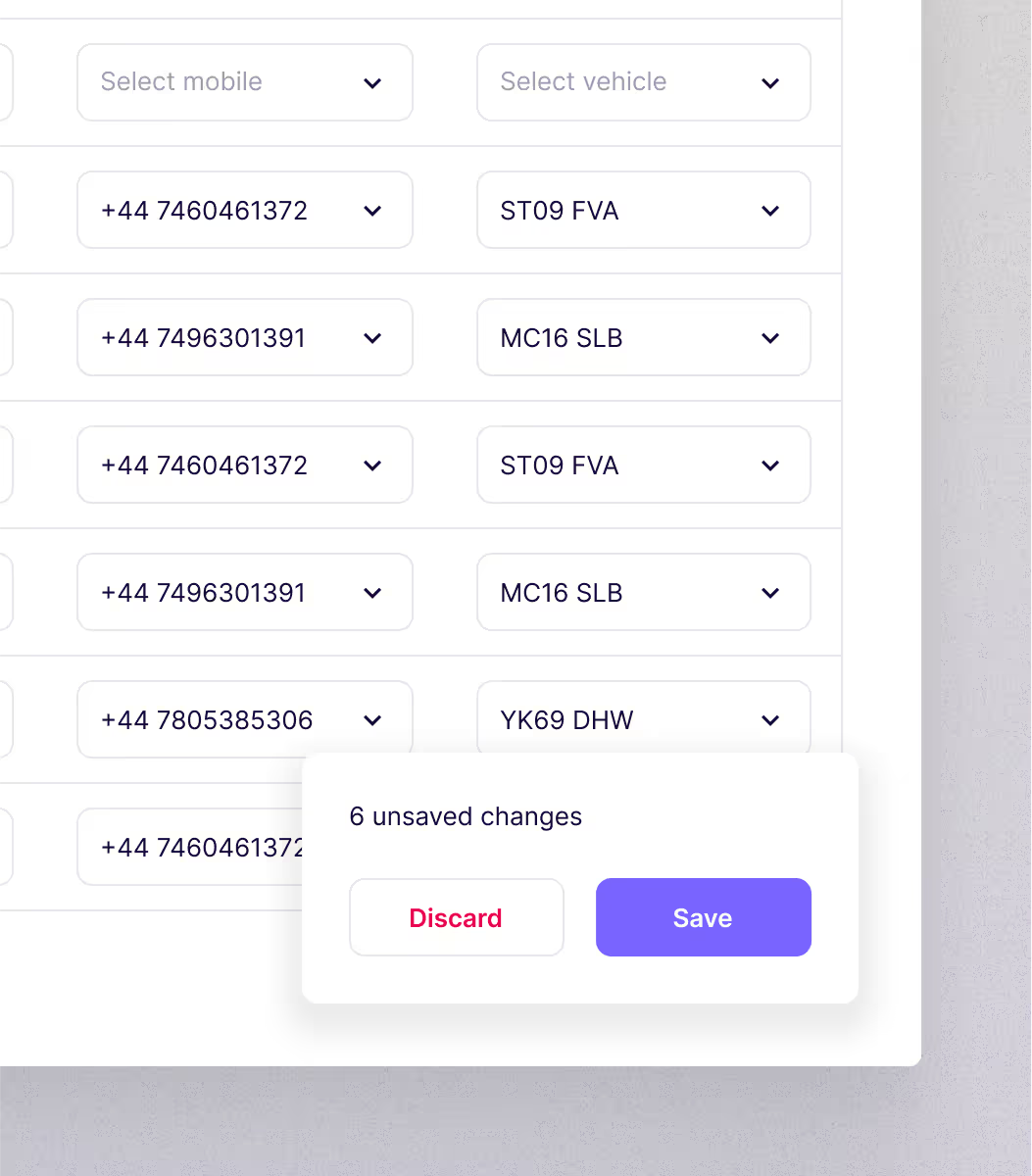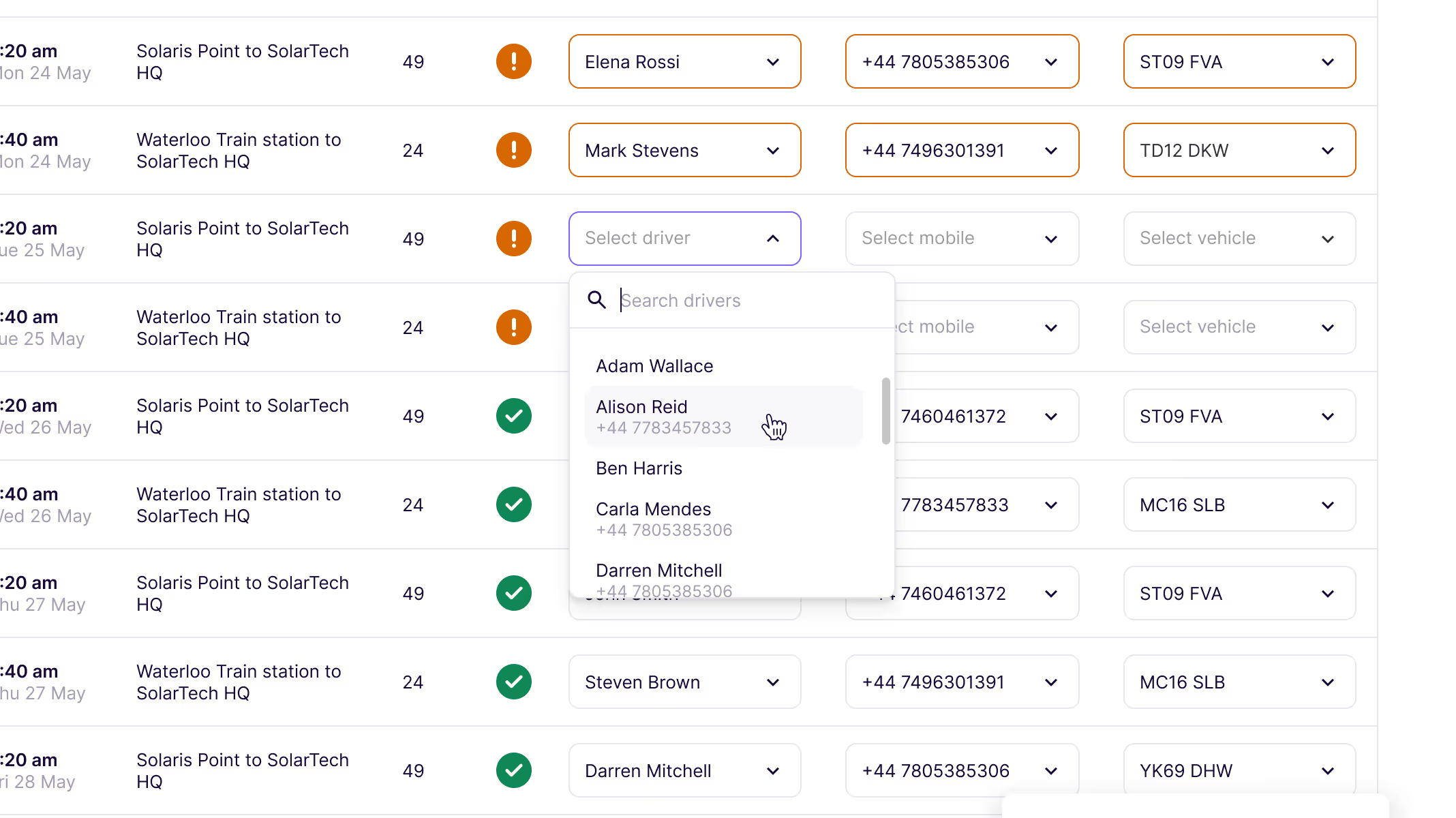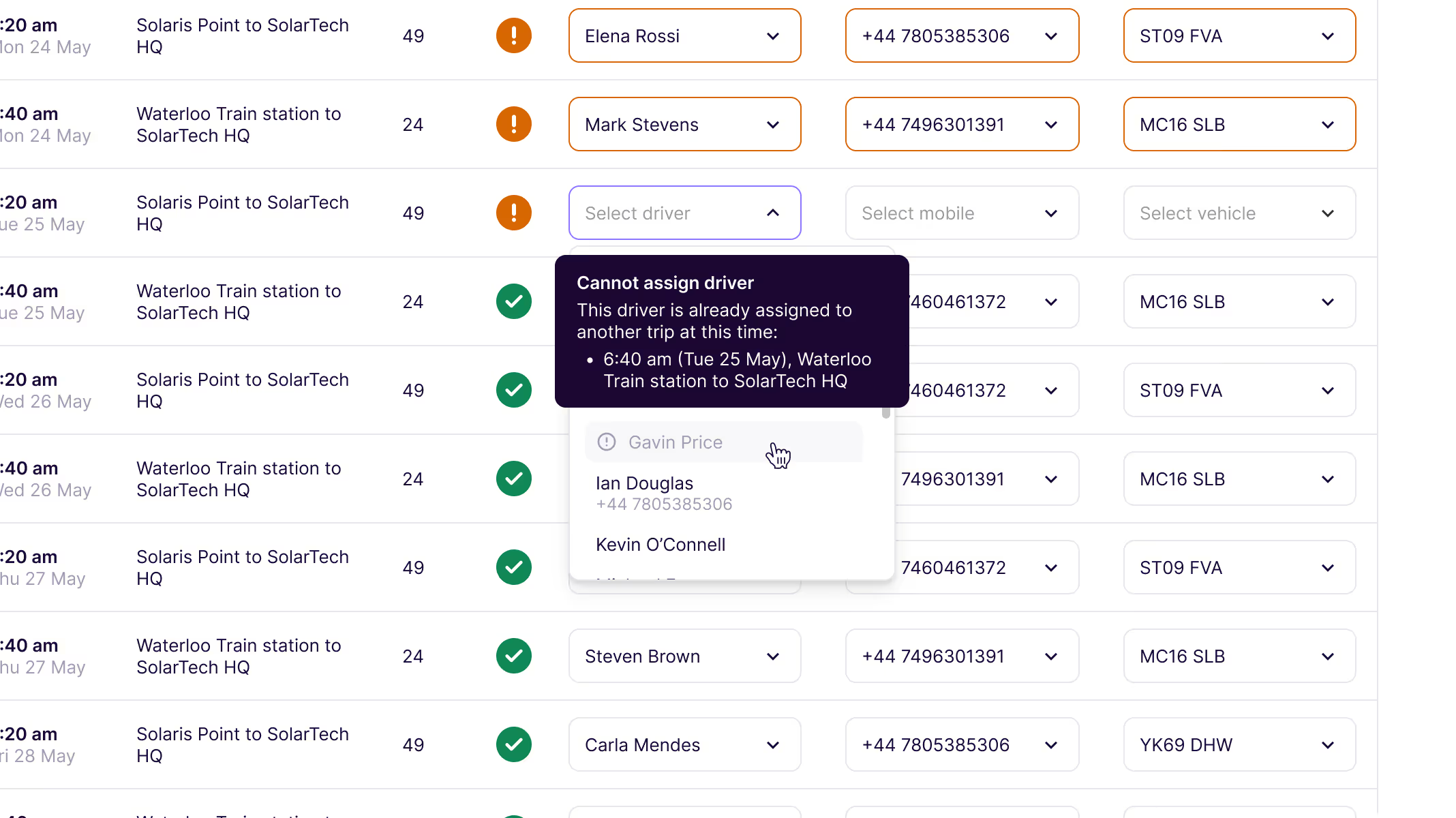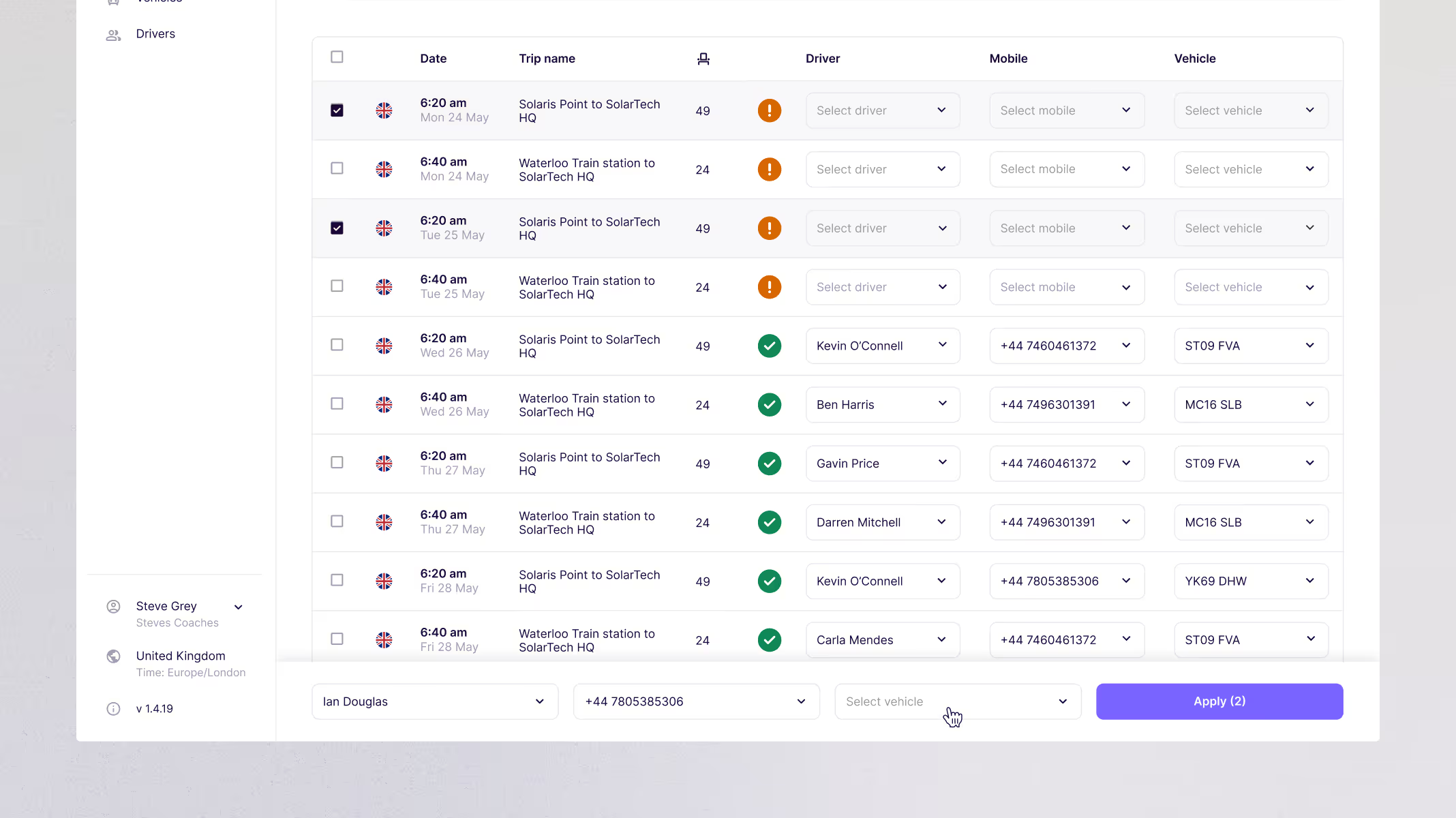Informed by research and the new persona, I led the design direction from early concept to final implementation. I began with quick sketches and wireframes to explore ideas, focused on creating an experience that was clear, familiar, and scalable. The designs evolved through structured feedback loops with the product manager, head of design, and key stakeholders, allowing us to iterate efficiently. Throughout, I prioritised simplicity, system thinking, and alignment, ensuring the final solution was not only practical but built to support Zeelo's long-term growth.
Reflecting on this phase, the key takeaway was how much designing for familiarity and simplicity shaped the direction of our early iterations. By grounding the experience in patterns operators already understood, we reduced friction and strengthened confidence with every design round. Aligning quickly as a team, we set the foundation for a solution that felt intuitive from the outset and ready to support business growth.
